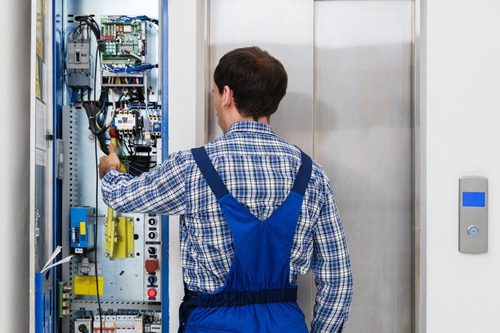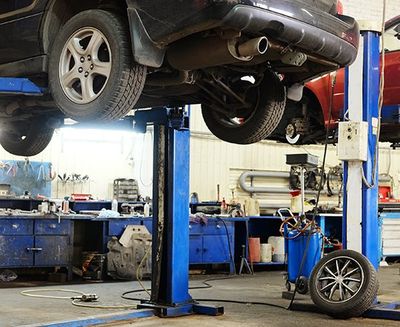Emergency Situation Lift Repair Solutions: Finest Lift Service Company Options
Emergency Situation Lift Repair Solutions: Finest Lift Service Company Options
Blog Article
A Thorough Strategy to Enhancing Efficiency With Strategic Lift Repair Work Strategies
A tactical and systematic technique to raise repair work and maintenance is crucial to maximize performance and decrease downtime. By dealing with common lift issues, implementing aggressive upkeep steps, and developing targeted fixing strategies, facilities can optimize their lift systems to run at peak performance degrees.
Importance of Lift Performance Optimization
Understanding the value of enhancing lift efficiency is crucial for making certain effective and reputable vertical transportation systems in various buildings and frameworks. Lifts are necessary components of modern-day infrastructure, providing upright movement for owners and products within structures of differing elevations. By optimizing lift performance, structure owners and center managers can boost user experience, enhance power efficiency, and increase general functional efficiency.
Effective lift efficiency optimization involves numerous elements, consisting of rate, capacity, energy upkeep, usage, and safety and security needs. Correctly maximized lifts can lower wait times for individuals, specifically in high-traffic structures, leading to boosted contentment and productivity. In addition, optimized lifts contribute to energy cost savings by using sophisticated control systems and innovations that decrease power intake without compromising performance.

Identifying Common Lift Issues
Identifying typical lift issues is necessary for maintaining the operational performance and security of upright transport systems in structures. Recognizing these issues can aid avoid malfunctions, lower downtime, and extend the life-span of the lift equipment. One typical issue that structure supervisors and maintenance teams often experience is uneven or jerky activities throughout operation. This issue can be indicative of problems with the lift's electric motor, control system, or even the alignment of the lift cars and truck.
One more common lift issue is strange noises originating from the lift shaft or machinery room. These noises can range from grinding or scratching audios to loud clunking sounds, all of which may indicate underlying mechanical issues that require prompt interest. In addition, regular door malfunctions, such as doors closed or closing properly, can interrupt the smooth flow of passengers and pose safety and security threats.
Applying Aggressive Maintenance Actions
To maximize the performance and long life of lift systems, positive upkeep procedures play an essential role in making certain functional dependability and safety. platform lift dimensions. Carrying out proactive maintenance involves methodically checking, servicing, and fixing parts prior to they stop working, thus protecting against expensive downtime and potential safety hazards. Regularly arranged evaluations can aid determine minor issues prior to they escalate right into major issues, eventually expanding the lifespan of lift systems
One secret facet of positive maintenance is creating an in-depth upkeep routine based upon producer recommendations and sector best techniques. This schedule ought to lay out jobs such as lubrication, positioning checks, and part replacements at defined periods. Additionally, carrying out problem surveillance methods, such as resonance evaluation and thermal imaging, can aid discover early indicators of wear or breakdown.
In addition, training upkeep personnel on correct inspection methods and preventive maintenance procedures is crucial for the successful implementation of proactive upkeep actions. By fostering a culture of proactive maintenance within an organization, lift systems can run at peak efficiency levels, reducing interruptions and making certain the safety of individuals.
Developing Targeted Repair Work Strategies
Upon assessing the maintenance documents and efficiency information, the engineering group can create targeted repair work plans to attend to particular issues and maximize lift system functionality. These repair strategies are customized to the determined issues, guaranteeing that resources are concentrated on fixing essential problems efficiently. By focusing on repairs based on their influence on efficiency and security, the targeted repair strategies assist minimize downtime and upkeep expenses while maximizing the lift system's integrity.
Establishing these strategies includes a detailed evaluation of the lift system components, consisting of motors, wires, brakes, and control systems. With this comprehensive assessment, the engineering group can figure out the origin of any type of breakdowns or destruction in performance. This details lift service company is then made use of to create a roadmap for the repair service process, detailing the essential steps, timeline, and sources required to address each issue properly.
Furthermore, targeted repair service plans may include preventative measures to boost the lift system's long life and efficiency. By proactively addressing prospective concerns before they rise, these strategies contribute to the overall efficiency and safety of the lift system.
Making Use Of Data-Driven Insights
Utilizing the power of data-driven insights is critical in enhancing lift system performance and maintenance performance. These predictive upkeep approaches aid avoid unexpected failures, decrease downtime, and expand the lifespan of lift systems.

Final Thought
Finally, maximizing lift performance is vital for ensuring performance and safety in structures. By identifying typical lift problems, executing aggressive upkeep steps, developing targeted fixing plans, and utilizing data-driven insights, companies can boost efficiency and decrease downtime. It is essential to take an extensive technique to raise repair service methods to take full advantage of operational effectiveness and ensure the long life of lift systems.
By attending to common lift problems, implementing proactive upkeep steps, and establishing targeted fixing plans, facilities can optimize their lift systems to run at peak performance levels.One more common lift problem is unusual sounds emanating from the lift shaft or machinery space.Upon examining the maintenance records and efficiency information, the design group can develop targeted repair work plans to maximize and address certain problems lift system performance. By focusing on fixings based on their effect on performance and security, the targeted repair strategies aid minimize downtime and upkeep expenses while making the most of the lift system's dependability.
It is important to take a detailed strategy to raise fixing methods to take full advantage of functional effectiveness and make sure the durability of lift systems.
Report this page